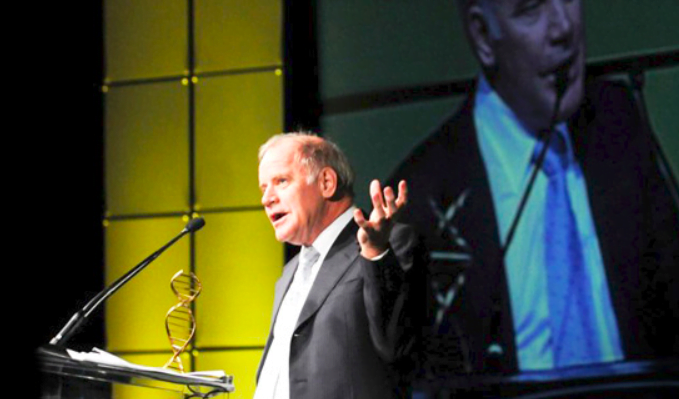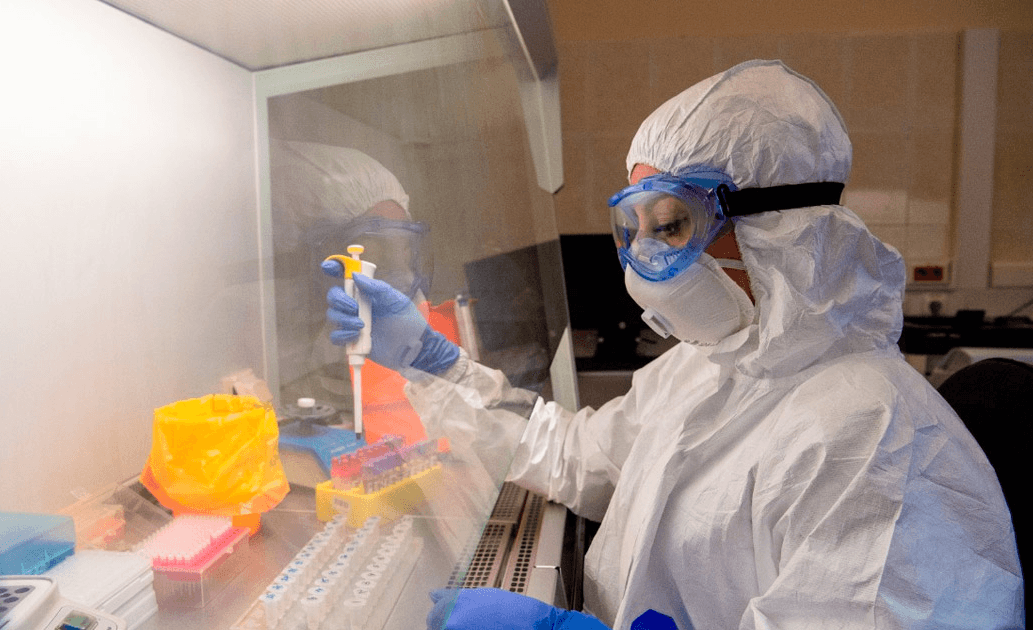Information is being spread that Kary Mullis, the creator of the PCR method, said that his test should be used only for scientific purposes, and is not suitable for diagnosis, since the test can give false positive results and show the presence of viruses that a person actually does not have. We decided to check whether the scientist actually held this opinion.
The American researcher writes about this position "Red Spring", and also numerous pseudo-medical sites And forums. The same information is shared by users Facebook, "VKontakte», Telegram And Instagram. In the context of criticism of PCR testing for coronavirus infection, he attributed to phrase: “Doing something like this on the entire population is a scientific heresy. Many of my colleagues - clinicians, scientists who approve such tests - should be ashamed! This is what shocks me the most."
PCR is a polymerase chain reaction that can detect any pathogen in a sample if even the slightest particle is present. The PCR diagnostic method helped doctors even before the coronavirus pandemic - it think one of the most sensitive and accurate tests. The PCR method is used to detect many sexually transmitted infections (chlamydia, gonorrhea, herpes, gardnerellosis, HPV, HIV), carry out differential diagnosis of bacterial and viral pneumonia (including coronavirus pneumonia), determine the presence of respiratory infections, identify Helicobacter, and use it to diagnose salmonellosis, diphtheria, viral hepatitis and cytomegalovirus infection.

Its discoverer, Kary Mullis, was born in 1944 in North Carolina. Boy from childhood was different craving for experiments - according to him, at the age of 14 he used a mixture of sugar and potassium nitrate to create fuel for a homemade rocket. She successfully took off a full kilometer, and her passenger, a frog smeared with asbestos, calmly returned alive from the troposphere on a parachute designed by Mullis. In the 60s, Mullis became interested in experimenting with hallucinogens, in particular LSD, which was not yet banned. Inventor wrotethat “hallucinogens and psychedelics helped him make the most important discovery” - the creation of PCR. As a graduate student, Mullis became involved in cosmological theories, in particular wrote a pseudoscientific article that “time should flow in different directions for observers on Earth and for an observer outside the sphere emitting the cosmic microwave background radiation.” Surprisingly, the article was accepted and published in the journal Nature. By assumption Kary Mullis himself and the magazine's editors should still be ashamed.
With a certain degree of assumption, we can say that the discovery of PCR was unintentional. Mullis set before having to fire four of the seven employees of the laboratory where he worked. He was thinking about how to optimize and improve the process, which would allow him not to part with valuable personnel. So he came to the idea that the expensive and lengthy procedure for diagnosing fetal pathologies should be simplified. The existing technology was that isolated fetal DNA was implanted into a mouse egg, and the newly born mouse was analyzed for severe pathologies. Mullis decided that he could do without a mouse. He invented a way to unwind DNA and a way to copy it the number of times necessary to obtain a sufficient volume of the substance. Interestingly, an article submitted to Nature about the invention of the PCR method was not accepted by the journal. As a result, the article did not immediately, but was accepted and printed in Science, and already in 1993 Kary Mullis received Nobel Prize in Chemistry for the discovery of the polymerase chain reaction.

It is interesting to note that, along with a career as a scientist, Kary Mullis considered a career as a writer. Later on his website he very colorfully described the moment when he came up with the idea for PCR: “The California chestnut trees stretched their heavy flowers towards Highway 128. The pink and white shoots hanging from the branches in the light of my car's headlights seemed cold, but they were filled with warm ethers that dominate the olfactory sphere. It seemed like it was a night of chestnuts, but something else worried me. The tires of my little silver Honda carried us through the mountains. My hands felt the road and turns. My thoughts returned to the laboratory. The DNA chains folded and seemed to float. Vibrant blue and pink images of electrical molecules appeared somewhere between the mountain road and my eyes."
Despite the fact that the invention of the PCR test can be considered one of the most important discoveries in medicine, Kary Mullis had a very controversial reputation in scientific circles. In his book "Naked Dance in the Field of the Mind" he brought arguments against the ideas of global warming and depletion of the ozone layer, proved the scientific nature of astrology, and also denied the connection between the human immunodeficiency virus and AIDS. In it, he wrote about a conspiracy of environmentalists, governments and scientists who are promoting their own selfish interests. However, neither in book, nor in numerous interview, nor on personal website Mullis did not say that PCR should not be used to diagnose diseases. Moreover, such an idea contradicts the very premise of the invention - Mullis was looking for a way to simplify and reduce the cost of diagnosing diseases in the fetus. And, of course, he could not call testing for COVID-19 scientific heresy and shame scientists - Kary Mullis died August 7, 2019, while the first officially documented case of coronavirus infection happened no earlier than November 2019.
Presumably, online conspiracy theorists took the idea that the test, according to its creator, should not be used to diagnose diseases, from articles John Lauritsen, in which he quotes Kary Mullis as saying: “QPCR is an oxymoron.” Indeed, the polymerase chain reaction can only determine the presence of a pathogen in a sample, but not its quantity. Lauritsen questions one of the antiretroviral therapy options, protease inhibitors, because at the time of writing, he says they are not approved by the US Food and Drug Administration (FDA). However, the author is wrong - the first protease inhibitor received FDA patent December 6, 1995. Next he writes: “What PCR does is select a genetic sequence and then amplify it enormously. It is like looking for a needle in a haystack. Like an electronically amplified antenna, the PCR greatly enhances the signal, but also significantly increases the noise. Because the gain is exponential, the slightest error in a measurement, the slightest contamination, can lead to errors of many orders of magnitude.” That is, even Lauritsen does not say that PCR cannot be used in diagnosing diseases, he only warns about the inadmissibility of contamination (contamination) of the sampling instrument.
Thus, Nobel laureate Kary Mullis never said that the PCR test he invented was not suitable for diagnosing diseases, much less refuted the possibility of mass PCR testing for coronavirus infection, since he simply did not live to see the time when the SaRS-CoV-2 virus appeared in the human population. Moreover, he invented PCR precisely in order to speed up and simplify analysis for various diseases and malformations.

Fake
Read on the topic:
If you find a spelling or grammatical error, please let us know by highlighting the error text and clicking Ctrl+Enter.






